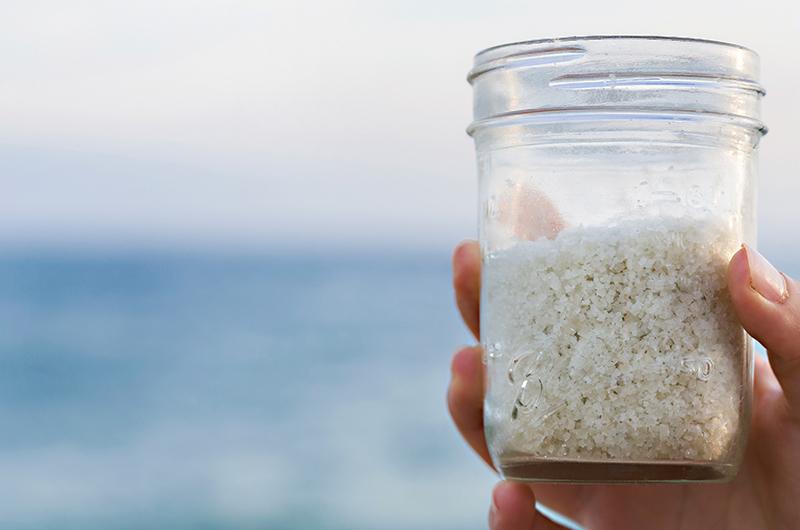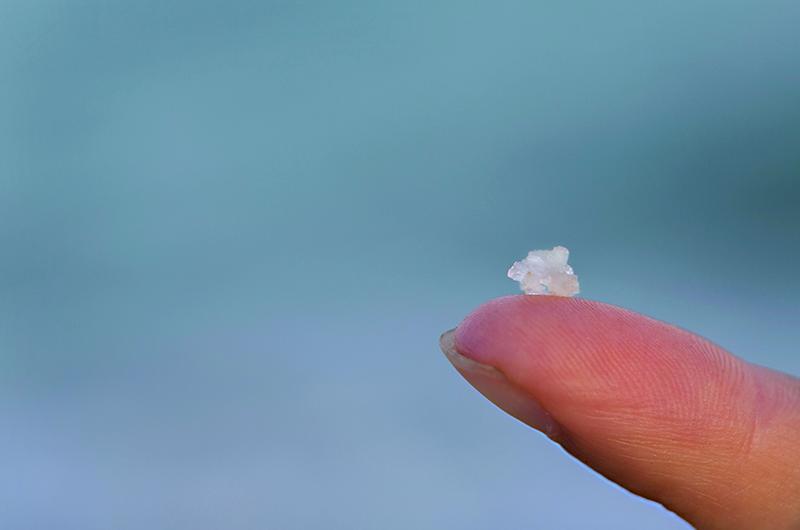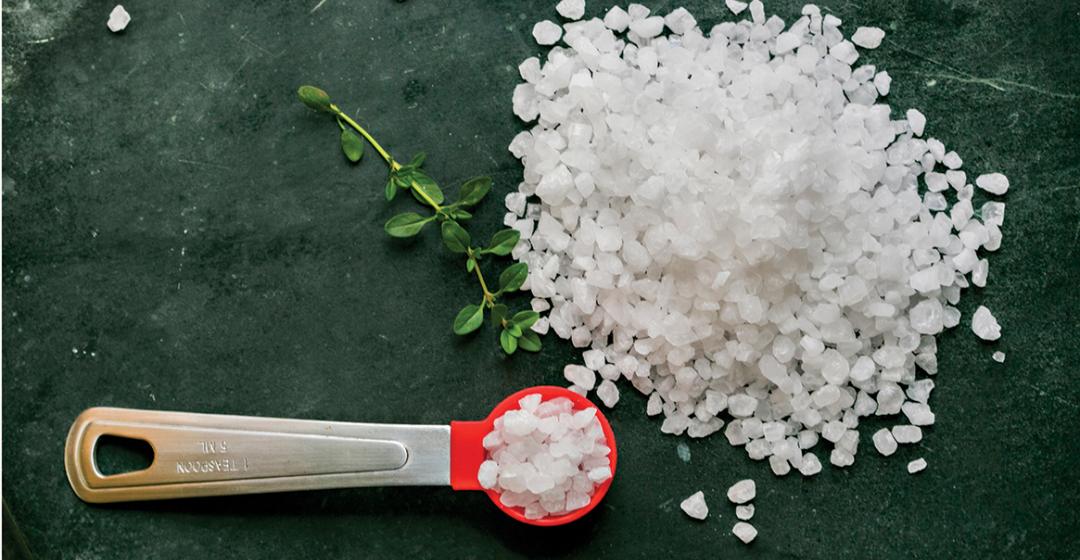Surrounded as we are on all sides by the deep blue sea, and faced by more brands of salt on grocery store shelves than one can shake a grinder at, it’s hard to fathom that for much of history salt was among the most sought-after commodities in human affairs. From the ancient Chinese to the camel drivers of the trans-Saharan trade to today’s backyard fish-smokers and free-range turkey-briners, people everywhere have used salt to cure, pickle, preserve, and of course, season their food. Put simply, we can’t live without it.
Here on the Vineyard, producing salt by evaporating seawater was once a relatively big business. “There are in Edgartown three sets of saltworks, containing 2,700 [square] feet,” said Reverend James Freeman of Boston after an 1807 visit to the Island. “And in Tisbury, five sets, containing 8,900 [square] feet.” Salt was, Freeman estimated, the second largest industry on the Island, after wool. By 1836 there were eleven saltworks operating in Tisbury, which at that time included Holmes Hole (Vineyard Haven) and West Tisbury. And while Martha’s Vineyard was never as big a producer as Cape Cod, where there were some five hundred saltworks at the time of the Civil War, salt-making was always a better business here than on neighboring Nantucket, where it was too foggy to compete.
At most nineteenth century saltworks, small windmills pumped seawater into large wooden vats, or troughs, which were typically eighteen feet wide and as much as fifty feet long. These were open to the air, with removable plank roofs to prevent rainwater from diluting the brine as it moved through stages of production – from the vat known as the “water room” to the “pickle room” to the “lime room,” and finally, to the “salt room.” If all went well, three-hundred-fifty gallons of seawater yielded a bushel of salt.
As with so many other Island industries during the age of sail, salt manufacturing dried up, so to speak, in the middle of the nineteenth century. An 1829 report on Edgartown’s salt production lists six saltworks, but notes that the introduction of cheap salt imports was causing the industry to stagnate. The last saltworks on the Holmes Hole waterfront closed up in 1850 after its owner went to join the California gold rush, leaving behind a stack of unpaid bills. No one knows for sure when the last Island saltworks ceased operation, but by the twentieth century, they were gone. What might be called the Morton’s iodized century had begun.
On Martha’s Vineyard, however, old things have a way of coming back around. The first lick of change came in 1995 in the form of a small cylindrical jar with the label, By the Sea Salt. Concocted in West Tisbury by Cherrilla Brown from a recipe perfected many years before by her mother (also Cherrilla Brown), it’s a savory blend of kosher salt and herbs. In 2010, she introduced a zestier version called José Can You Sea? Salt, and today she sells upwards of ten thousand jars of the stuff a year. “Salt’s been good to me,” she says. Brown doesn’t manufacture her own salt; its name stems from its Island location, but it was a step in the direction of a local revival.
During that same time period, stories began to trickle out of foodier up-Island valleys of people boiling seawater or evaporating it over the summer in a lasagna pan under a piece of glass. Islanders of a certain generation got together and shared precious dime bags of…salt.
It was only a matter of time, therefore, before true salt manufacturing returned to the Island, and this past spring Martha’s Vineyard Sea Salt debuted at the West Tisbury Farmers Market. Evaporated from seawater using good old-fashioned sunshine and a solar-powered fan, Martha’s Vineyard Sea Salt is the product of the hard work and clever engineering of Heidi Feldman and Curtis Friedman of Vineyard Haven.
The pair first began talking about creating a natural sea salt three years ago, but it took a lot of trial and error to find their saline groove. First off, unlike nineteenth-century producers, they don’t have the luxury of a waterfront saltworks. Instead truckloads of salt water need to be delivered to their home base at Down Island Farm. Then there was the small problem of the truck getting stuck in the sand if it was loaded with water on the beach. Filling buckets and transporting two to five thousand pounds of water by hand to the truck from the beach also proved a ludicrous endeavor. The solution? A rigid hose, a flex hose, and a small pump that sends water from the beach back to large containers in the bed of the truck.
Back on the farm the salt water is filtered into a solar evaporation structure of Friedman’s design (that looks something like a greenhouse). The evaporation rate varies widely with the seasons, but once the salt crystallizes to the right degree, the pair rake it into mounds, let the brine drain away, and package it. “It’s beautiful to look at,” says Feldman. “And our salt has a very high mineral content.”
Vineyard retailers have embraced this new salt made in the old way. Martha’s Vineyard Sea Salt is available at some twenty Island stores, which is great news for cooks and diners alike. Celebrated Island caterer Jan Buhrman of Kitchen Porch swears by sea salt, using the less nutritious kosher variety only in specific circumstances. Enamored with the power of this crystalline fruit of the sea, Buhrman compiled a salt primer, replete with recipes and fascinating miscellany surrounding this four-letter commodity whose taste has marked history.
Fact or Fiction:
Sea salt has less sodium than table salt.
If you said “fact,” you are just as wrong as 61% of Americans surveyed in a 2011 American Heart Association study. Sea salt may have traces of other nutritious minerals, but its sodium content is on par with table salt. And a high-sodium diet is associated with high blood pressure...cue that old saying about good things in moderation.

A Field Guide to Salt

Sea Salt is a purer salt than table salt, in that it’s in a natural state – void of added chemicals and ingredients. It is evaporated from salt water, ideally with little processing (and, one would hope, little in the way of modern pollutants). Nota bene: Some sea salts are more refined than others, and therefore have fewer minerals. It pays to read the labels.
Rock Salt is mined from underground deposits of a mineral form of salt known as halite, which is processed into lots of different shapes ranging from block salt for livestock to coarse salt for grinders. Himalayan rock salt is mined from Pakistan’s Salt Range and is lauded for its high natural mineral content. I use large-grained rock salt to make a bed for my Oysters Rockefeller; I use the same salt when our walkways are in need of de-icing.
Table Salt is also mined and highly processed, to the point that all additional elements and minerals are removed. However, table salt is not pure sodium chloride: Iodine and anti-caking agents are added.
Kosher Salt is a source of much debate in my kitchen. Really, who wants to fight with the word Kosher? Like table and rock salt it’s mined and processed, but its crystals are larger than those in table salt and no anti-caking additives or iodine are added. Our kitchen uses Kosher salt for some brines, and a few of my classically trained chefs cannot be strong-armed into switching over to sea salt.
Fleur de sel is a sea salt that traditionally comes from France’s Atlantic Coast. The term more generally refers to the first crystals that form and float to the top of a batch of evaporating salt water, which are then skimmed off the top. It has wonderful flavor and a moist, crunchy texture.
Sel gris crystals are the last to be harvested from a sea saltworks, raked off the bottom of the salt pan. Sel gris has a very high mineral content and is a moist, crunchy salt. It’s also known as Celtic sea salt.
Flake Salt, not surprisingly, comes in the form of flakes instead of crystals, an effect that can be achieved using several different processes. Flake salt can be made from sea salt or kosher salt. My favorite is a sea salt made by Maldon Salt, harvested on England’s southeast coast.
Black Lava Sea Salt is generally made from evaporated salt water and mixed with activated charcoal, although there are many regional variations. I love this salt with raw fish. To enjoy: Head to Menemsha and tackle a fisherman; slice the fish into very thin slices; squeeze lime juice over the fish; sprinkle with black lava sea salt. The salt brings out all the flavors of the sea, and the delicate crunch of salt popping in your mouth makes for an unforgettable experience. Caution: Only use black lava sea salt as a finishing salt; if you cook with it, you will end up with a puddle of charcoal.
Pickling Salt is similar to table salt, except its finer granules and lack of iodine prevent cloudiness in brines. (The brine in my preserved lemons is cloudy since I use sea salt.)
Smoked Salt is coarse salt (preferably sea salt) that’s been smoked over wood fires or in a smoker. It can range in color from light grey to dark brown and lends an assertive smoky aroma and flavor to foods of all kinds, from grilled fish to creamy soups and corn-on-the-cob.
Roasted Salt has been heated over a fire, most often in a container that flavors the finished product. For example, Korean bamboo salt is roasted in bamboo cylinders over a pine-resin fire.
Did You Just Say...Merrior?
A foodie cult word that combines “terrior” (a word denoting the distinguishing taste of plant-derived foods, like wine, based on their geographical origin) with “la mer,” the French word for the sea. Hence, “merrior” refers to the qualities of an area’s seawater that are reflected in the taste of its products. For example, Martha’s Vineyard Sea Salt brings the merrior of Vineyard waters to our food.
Salt Saves
For millennia salt has been used to preserve food, as some food bacteria and other microorganisms cannot survive in a highly saline environment. Salting, or rubbing and packing meat or fish with salt, was a standard means for preserving provisions on long sea voyages before the advent of canning and refrigeration. Corning, the process that we can thank for corned beef, preserves meat in brine. It’s an equation not far off from pickling: salt-concentrated water plus perishables. Curing employs salt, along with sugar or other spices, in food preservation. I particularly love reaping the benefits of this last technique: Each November, we slaughter our pigs and cure different cuts. We cure our bacon first by dry-rubbing it with salt, sugar, and spices and then smoke it. We also make several different types of fermented sausages. It never ceases to amaze me how a hunk of fresh meat with a few spices and salt can become a fantastically well-preserved and flavored cacciatore sausage!
Why Iodine?
In response to widespread iodine deficiency, which causes both goiter and developmental health issues, Morton began adding the element iodine to its table salt in 1924. Iodine deficiency remains a serious problem in parts of Africa and Asia, and many humanitarian organizations promote the use of iodized salt in these areas as a simple and cost-effective solution to this aspect of malnourishment.
The following recipes were originally published along with this article:
Salt-Roasted Stuffed Onions
Preserved Lemons
Herb and Salt Encrusted Chicken
Salt-Baked Mahi-Mahi with Salsa Verde







